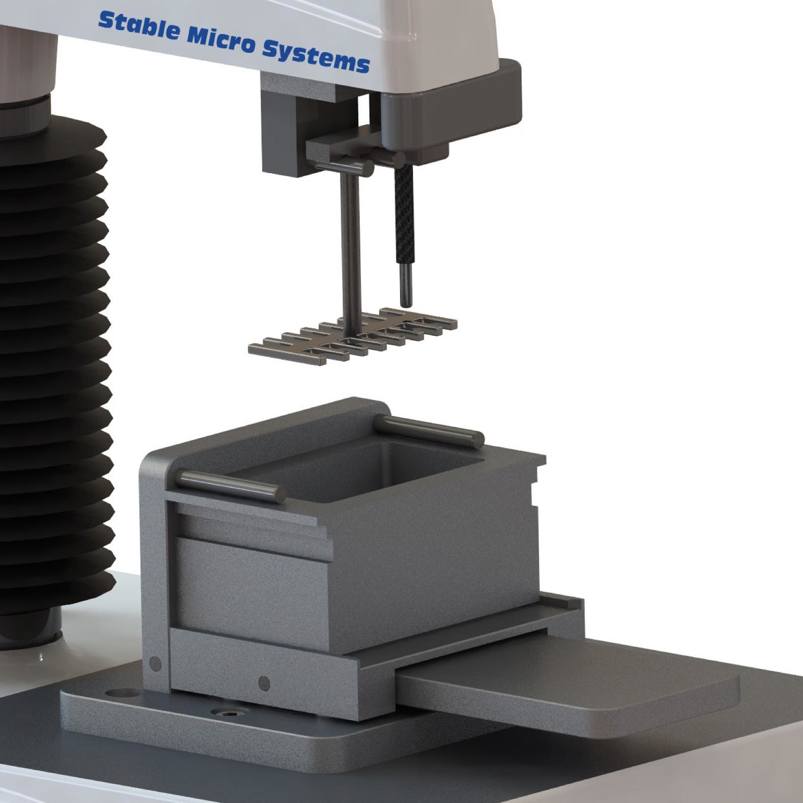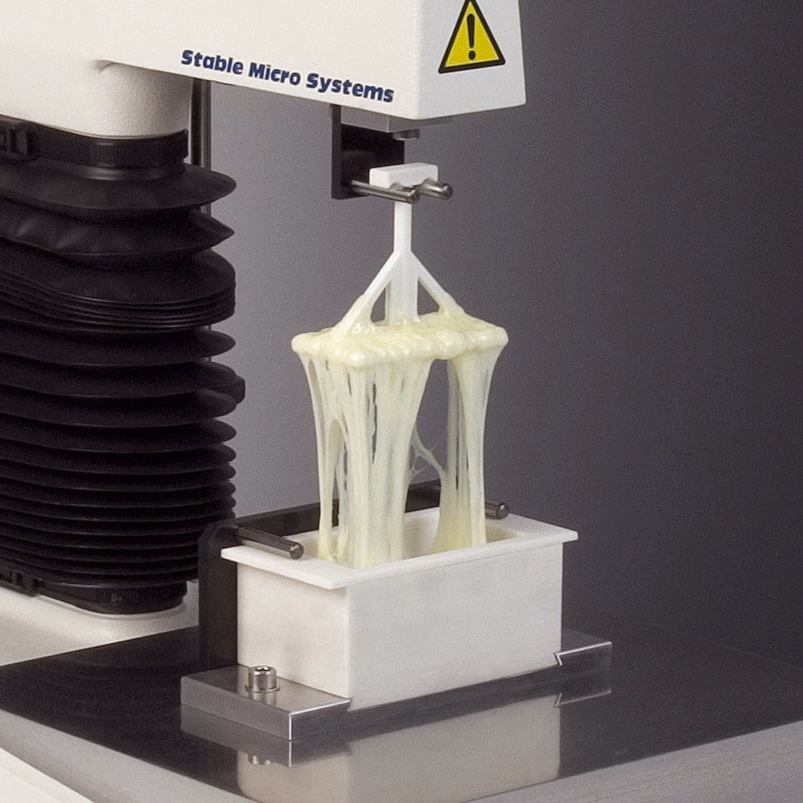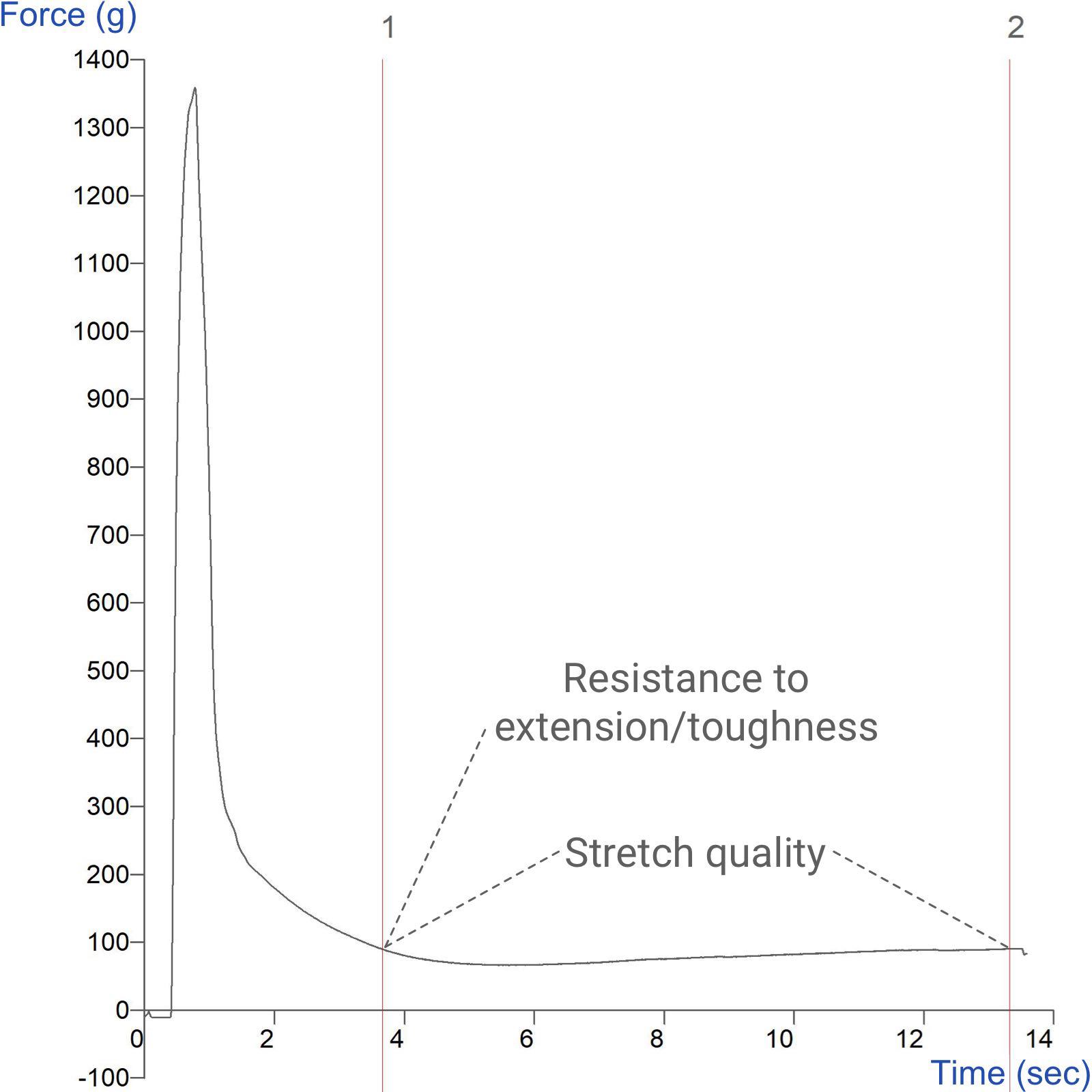Product overview
The extensibility of cheese is an important textural characteristic in a wide range of food applications – in particular, pizza. Freezing, shredding, thawing and even cooking cheese can have a significant impact on its textural characteristics. Reduced-fat products also display very different characteristics compared to full-fat versions. All of this may result in a texture with undesirable mouthfeel. One of the most obvious ways to test the stretchability of cheese is to lift it manually with a fork and estimate the force required to stretch it, as well as the length to which it stretches. This method is inherently subjective and unreliable.
The Cheese Extensibility Rig was developed in response to the need for an objective, repeatable test method for cheese and consists of a vessel and double-sided fork probe. The vessel and fork assembly is filled with a known weight of cheese and heated until the cheese is molten. A sample retaining insert is added to the vessel and the vessel/fork assembly slides into the attachment base, which is securely fastened to the Texture Analyser. The fork is connected to the load cell via a rapid locating adapter. The Texture Analyser pulls the fork through the molten cheese allowing the extensibility and resistance to extension to be measured. Typically, the longer the distance, the stretchier the cheese. For repeatability and replication of consumer experience, a Temperature Probe is included to monitor the temperature of a sample. The test can then be programmed to start when a chosen target temperature is attained.
Microwaveability in many cases may be desirable, therefore this rig is available in materials which are microwaveable (A/CEM). For those users who are able to heat their product otherwise (e.g. in a standard oven) a version of this rig is available in aluminium which provides a longer testing life (A/CEO).
How does the Cheese Extensibility Rig work?
Ideal sample form
A material which possesses elongational properties when in a natural or molten state.
Benefits and limitations
- Double headed fork increases force measurement to aid in differentiation of results
- Extremely extensible samples may require an extended height Texture Analyser
Optional extras
Adapter to fit A/CEM or A/CEO to TA.HDplusC Texture Analyser – A/HCR/ADHD
Additional pot and fork (Aluminium) – A/CEO/P
Additional pot and fork (Delrin) – A/CEM/P
Technical information
Installation
Full installation instructions are provided within the Education Zone of the latest Exponent/Connect software version and on the technical information sheet accompanying this product.
Chemical compatibility
Stable Micro Systems probes and attachments are commonly made from four materials: anodised aluminium (AA6082 T6), stainless steel (316 T), Delrin (acetyl copolymer) and Perspex (polycarbonate).
In general use, probes and attachments made from these materials will be suitable for testing food products and inert non-food materials.
The four materials listed above are not universally resistant to all types of chemicals and as such the compatibility of the probe/attachment material with the product (to be tested) must be established to prevent damage to the probes and attachments. If the compatibility of the product with the probe is unknown to the customer then the chemical information about the product (Material Safety Data Sheet or Product Data Sheet) should be submitted to Stable Micro Systems. Stable Micro Systems will then assess the suitability of the probe/attachment material for use with the product and advise accordingly. If this advice is not sought then Stable Micro Systems will not accept liability for probes/attachments damaged by chemical attack from the product being tested.
Cleaning and maintenance
All probes and attachments may be cleaned in warm (or hand hot) water using a mild detergent. A soft brush may be used but abrasive cleaning aids should be avoided. Stable Micro Systems products should not be microwaved or cleaned in a dishwasher.
Screw threads should be lightly lubricated after drying using a light lubricant, e.g. petroleum jelly, mineral oil. This will aid the fitting and unscrewing of the item. Each component of a probe or attachment should be wrapped separately when stored, to avoid scratching or chipping. This will safeguard against any unnecessary damage to the accessory.



